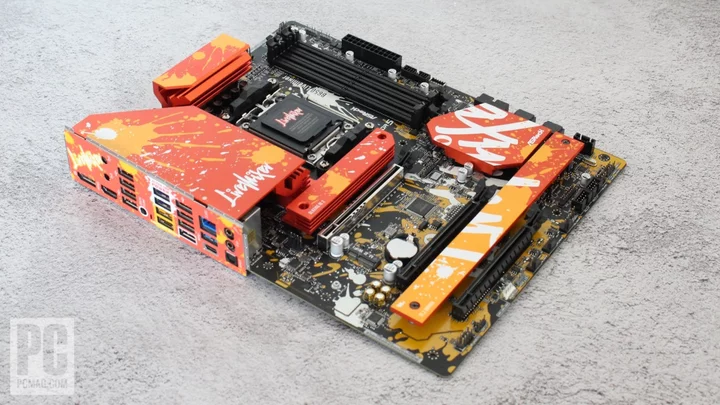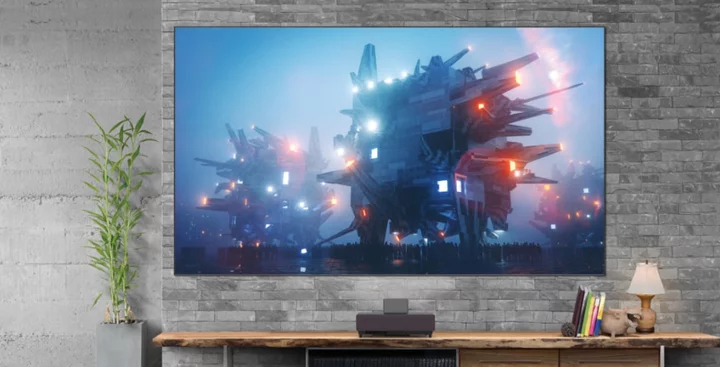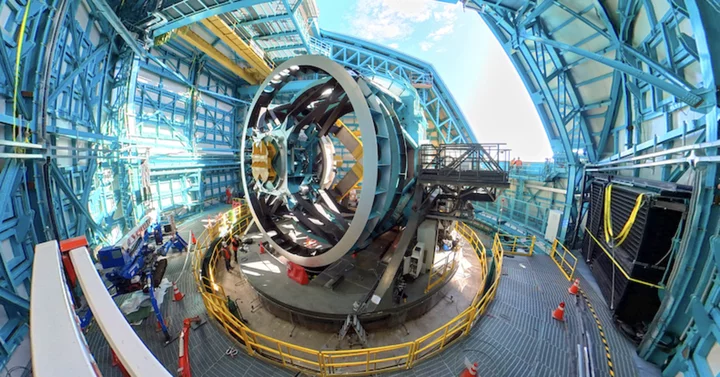Priced at $229.99 but available for under $200 if you hunt online retailers, ASRock's B650 LiveMixer is a uniquely styled ATX motherboard that the company aims at "current-gen content creators who need great connectivity for streaming and other auxiliary items." This affordable AMD Ryzen platform offers a bright orange graffiti or splattered-paint look that stands out, along with more USB ports on the rear I/O than we've seen even on flagship or halo boards—a staggering 14 in all. Got microphones, headphones, cameras, macro pads, mice, and keyboards? Bring 'em on. You also get three M.2 sockets, one with PCI Expresss 5.0 support, plus Realtek 2.5Gbps Ethernet, sufficient power delivery, and a budget audio codec. In the end, we like what the LiveMixer delivers, but its polarizing appearance and only two SATA ports could be a turnoff for some. If you admire the streetwise look, though, this is a board like no other.
Board Design, CPU, and Memory
Shrinking violets (and windowless cases) need not apply, as the colorful LiveMixer reminds me of the DFI LanParty boards back in the day. The oversize VRM heatsinks and other components sport bright orange and red hues that spill over onto the 8-layer PCB, giving off a party vibe accentuated by graffiti-font LiveMixer labeling. ASRock says the creative focus is no jive, as the company tested different capture devices from AverMedia and Elgato to ensure compatibility. The PCIe 5.0 M.2 socket has a larger heatsink than the rest, which we like to see on those hot-running drives. The only reinforced PCI Express slot is the primary one, but that's the only slot likely to need the help reinforcement provides.
(Credit: Joe Shields)To add even more bling to the vividly colored board, several RGB LEDs are hidden under the SATA ports and front-panel USB header. Their glow is bright with saturated colors, helping cement the motherboard's love/hate appearance—either you'll dig the attention it brings, or you won't.
The B650 LiveMixer supports AMD's Ryzen AM5 processors with 17-phase power delivery and 60A MOSFETs. The 840 amps available to the CPU (14 phases dedicated to Vcore) proved to be plenty to handle our Ryzen 9 7950X at both stock and overclocked speeds. The big VRM heatsinks do an excellent job of keeping power delivery running within spec. Overclocking potential is limited only by your cooling.
Memory support tops out at DDR5-6400+(OC), which is about average among B650-class boards. Much past 6,400MHz, you're beyond what works consistently on the platform. The motherboard can hold 128GB of RAM via four slots with locking mechanisms on both sides, which should be ample even for content creators.
(Credit: Joe Shields)Our DDR5-5600 and DDR5-6000 kits ran fine after setting the internal profile (XMP on one kit, EXPO on the other). If overclocking memory is on your wish list, you can easily extract the last couple of percentage points of performance from your rig, as the BIOS offers memory timings to tweak to your heart's desire.
Layout and Internal Connectors
Starting at the top left corner, we see two 8-pin EPS connectors (one required) to power the CPU. Surrounding those are two large VRM heatsinks to cool the power delivery below. Next, we find the four black DRAM slots and the first two of six fan headers. Each header supports PWM and DC-controlled devices; the CPU_FAN1 header puts out 1A/12W while the others double that to 2A/24W. Fan control is handled through the BIOS or ASRock's A-Tuning app.
(Credit: Joe Shields)Moving down the right edge, we spy the EZ Debug LEDs for troubleshooting POST issues and the first two RGB headers—in this case, two 3-pin ARGB (the others are located across the bottom edge of the board). You can control the headers and integrated RGBs through the Polychrome RGB utility, which offers several different preset lighting schemes and brightness control.
Finally, we run into the 24-pin ATX to power the board, a front-panel USB 3.2 Gen 1 connector, and a front-panel USB Type-C 3.2 Gen 2x2 header.
Expansion, Storage, and Rear I/O
There are three full-length expansion slots in the middle of the motherboard. The top slot is reinforced and designated as the primary graphics slot. It's connected through the CPU and is the only PCIe 5.0 x16-capable offering. The middle slot also connects through the CPU and runs at PCIe 4.0 x4 speeds, while the bottom slot is also PCIe 4.0 x4 but sources its bandwidth through the chipset. That bottom slot, PCIE3, disables if the M2_3 M.2 slot is occupied.
(Credit: Joe Shields)Mixed in among the PCIe slots are three M.2 sockets. The top socket under the larger heatsink connects through the CPU and is the only PCI Express 5.0 x4 (128Gbps) outlet. The other two M.2 sockets get their PCIe 4.0 x4 (64Gbps) bandwidth through the chipset. ASRock lists RAID 0, 1, and 10 support for M.2 devices and RAID 0 and 1 for the SATA ports. As mentioned, this board has just two SATA ports (the other bandwidth went to USB ports), so if your storage is still SATA-heavy you'll need to consider upgrading to M.2 drives as needed.
Along the bottom edge of the board are several headers including additional USB 2.0 ports, fan headers, front panel audio, a Thunderbolt AIC header, and the two remaining RGB headers.
(Credit: Joe Shields)Welcome to USB City: At the rear is a preinstalled I/O plate in the colorful LiveMixer theme. Most of the port labels are white, which makes them easy to read. There are no fewer than 14 USB ports, led by one Type-A and one Type-C at 10Gbps each. There are four 5Gbps USB 3.2 Gen 1 ports—two are the Lightning Gaming headers and the others Ultra USB power headers. The eight black ports are 480Mbps USB 2.0 connectors. Also out back are the audio stack (two-plug, plus SPDIF), the LAN jack, a BIOS flashback button, and DisplayPort and HDMI video outputs. ASRock provides antenna cutouts for those adding Wi-Fi to the board.
UEFI BIOS and Utilities
The BIOS of the LiveMixer is just as bright as the board, with an orange and red background with white labels that makes it a lot to take in (and not quite as easy to read as others). Unlike most, it starts in Advanced Mode, but there is an EZ Mode available. The latter offers info about the processor, RAM, storage, fans, and more, as well as letting you enable XMP profiles and PBO and adjust thermal throttling limits.
(Credit: ASRock)The advanced BIOS has a more standard configuration with major headings across the top including Main, OC Tweaker, Advanced, Tool, H/W Monitor, and Boot. The Main page is informational, mostly repeating the My Favorite section, though users can make their own BIOS page listing their most frequently used items.
(Credit: ASRock)The OC Tweaker section holds the keys to tweaking your system. Here you can adjust voltages, RAM, and the CPU and save profiles for recall later.
(Credit: ASRock)The Advanced heading is the place to access CPU, chipset, storage, NVMe, ACPI, and USB configurations, among other items like Trusted Computing. You can also adjust the UEFI's appearance and starting page (EZ Mode or a particular page in Advanced).
(Credit: ASRock)The Tools section (not pictured) provides access to ASRock's Polychrome RGB for lighting control and SSD and NVMe sanitation or secure-erase tools, as well as the Instant Flash utility to flash your BIOS. H/W Monitor displays relevant system data ranging from CPU and motherboard temperatures to fan speeds and voltages. Here you can adjust the fan speeds of all the onboard 4-pin fan headers.
(Credit: ASRock)Aesthetics aside, the BIOS is as easy to navigate and full-featured as its competitors, with plenty of functionality to overclock the processor and memory. With the ability to control RGB lighting and fans and even wipe drives clean, it provides plenty of usefulness, and the latest version proved stable in our limited testing.
As for software, the ASRock Appshop lets you download and update drivers while the A-Tuning software tweaks your system (the board also supports the Blazing OC Tuner now in beta). The Appshop is helpful for downloading ASRock utilities such as Polychrome RGB and Nahimic3 audio. It also checks for drivers and allows you to update them straight from the utility, a handy alternative for builders not used to grabbing the latest drivers from component vendors' websites. Along with auto driver installation, this makes it easy to get all the latest and greatest software on your PC.
(Credit: ASRock)If you like to play with your system, ASRock's provided A-Tuning software is an all-inclusive tweaking app that lets you adjust fan speeds, tweak the CPU, and see detailed system info including temperatures, voltages, and clock speeds and ratios.
(Credit: ASRock)Verdict: A Mobo With Street Cred
The ASRock B650 LiveMixer is one of the most striking-looking motherboards around; its unique graffiti style, bright orange highlights, and integrated RGB lighting make it stand out inside your chassis. The made-for-content-creators board also packs enough USB ports to support all the peripherals necessary for streaming and other creative activities, as well as three M.2 sockets (one PCIe 5.0 x4) and two SATA ports for storage, flagship-class power delivery, a budget audio solution, and more. It's a well-rounded board for the price, though its appearance might have you looking for something more conservative.
(Credit: Joe Shields)There is plenty of competition around this price point, though nothing matches the LiveMixer's array of USB ports (Gigabyte's $219.99 B650 Aorus Elite AX is next with 12). Other options include the Asus B650 TUF Gaming Plus ($229.99) and MSI Pro B650-P Wi-Fi ($215). These rivals include the Wi-Fi the LiveMixer lacks and have at least four SATA ports apiece (the MSI has six), but if you like its look and don't need integrated wireless networking, the ASRock is arguably the best option available for under $200. It's definitely the splashiest.









